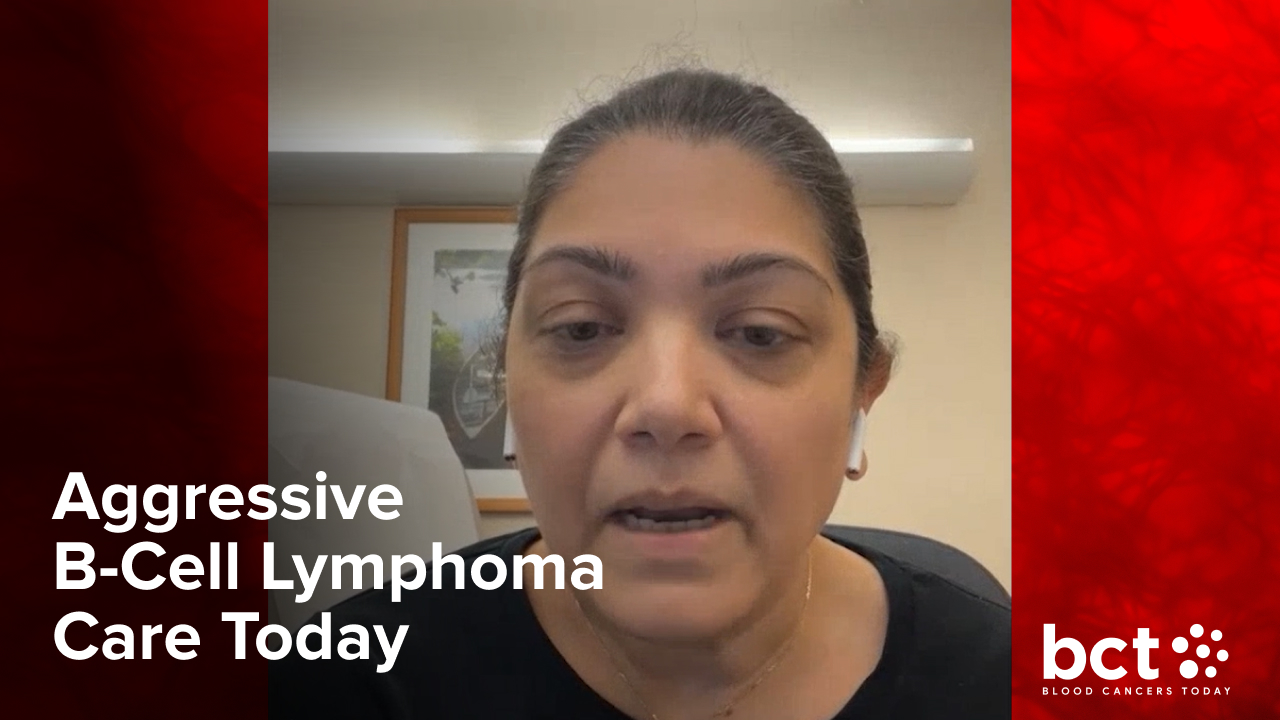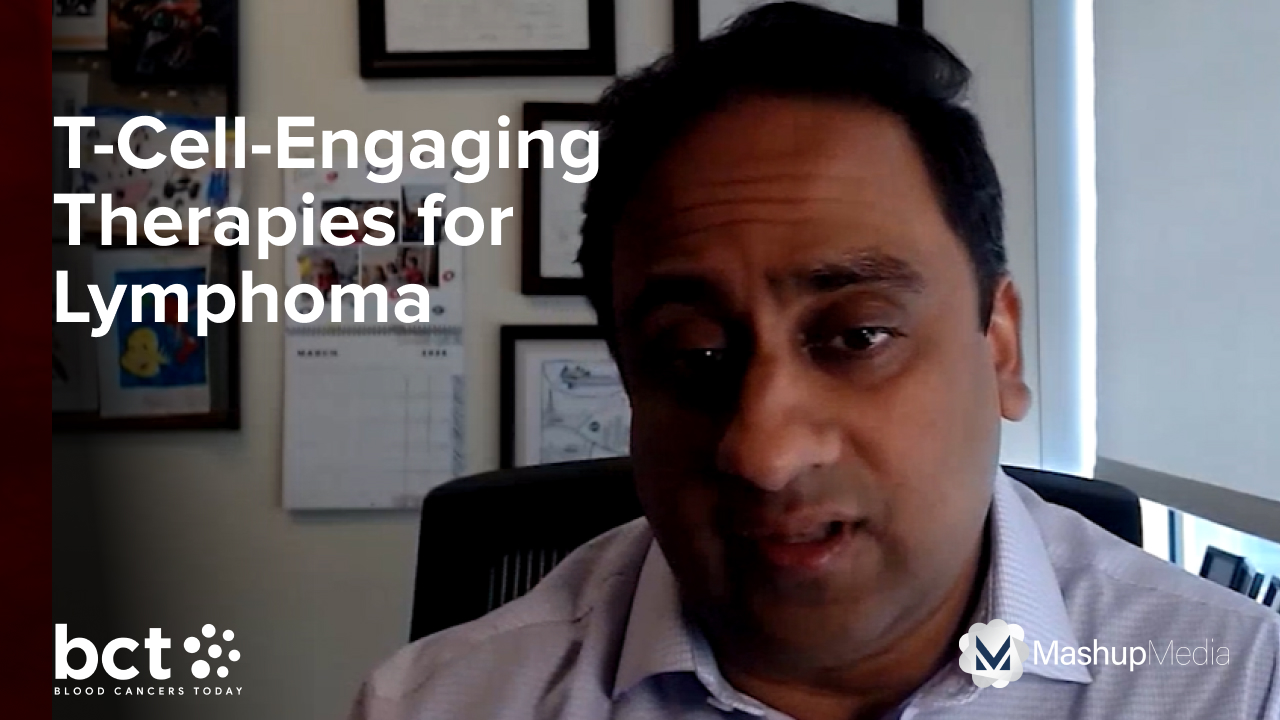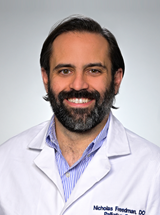Myeloma Panel Compares Real-World Versus Clinical Trial Data for CAR-Ts, Bispecifics
By Sagar Lonial, MD, FACP, Noopur Raje, MD, Krina Patel, MD, MSc - Last Updated: October 15, 2023A roundtable discussion, moderated by Sagar Lonial, MD, FACP, Blood Cancers Today Editor-in-Chief, of the Winship Cancer Institute at Emory University School of Medicine, focused on the latest updates in CAR T-cell therapy for multiple myeloma. Dr. Lonial was joined by Noopur Raje, MD, and Krina Patel, MD, MSc.
In the next segment of the roundtable series, the panel remarks on the similarity between clinical trial outcomes and real-world experiences for patients receiving CAR T-cell therapy, which “we don’t see often enough,” according to Dr. Raje.
Watch the next segment in this series.
—
Dr. Lonial: I think we’ve talked a lot about the clinical trial data, management, adverse events. I think we’ve covered most of the toxicity issues that people should be aware of. Let’s talk real-world data and what we know for either CARs [chimeric antigen receptor] or bispecifics. Why don’t we start with CARs?
Dr. Patel: I think there’s a U.S. Cell Therapy Consortium, which I think is about 15 centers that have been able to pull data together so that we can at least look at a higher number than the clinical trials. Last year, the KarMMa/ide-cel (idecabtagene vicleucel) comparisons were done, and thankfully the response rates are actually pretty high. It was still 86%. Again, these were patients that 75%, 77% of patients wouldn’t have been eligible for KarMMa, mostly because of their history of BCMA therapy, usually an ADC [antibody-drug conjugate] at that time, but also cytopenias, cardiomyopathy, renal failure, all these things. To see a high percent of patients actually responding was pretty impressive.
The PFS [progression-free survival] was a little bit lower. It was 8.6, 8.7 months. Still, compared to our MAMMOTH, LocoMMotion, and BCMA-refractory patients already, it’s still pretty impressive.
But I think the safety was what we were really worried about, that they were taking these patients who were so frail, are we going to be able to do it? It was, it was very similar: grade 1/2 CRS [cytokine release syndrome], not much grade 3/4. Mortality, there was a few patients that died, but again, COVID-19 infections, maybe a couple of patients have HLH [hemophagocytic lymphohistiocytosis], CRS. But very similar to clinical trial data. That was nice to say, “Okay, real patients can actually get this, not just clinical trial patients.”
Then we just had the cilta-cel (ciltacabtagene autoleucel) update for the last year at ASCO and EHA, and same thing: the response rates were about 86%, 87%, so a little bit lower than the 98% on the trial, but again, these are patients, 57% wouldn’t have been able to go on cilta-cel or on CARTITUDE-4. Again, we don’t have a PFS yet, it’s early data, but just really impressive in terms of the ability to actually give this to patients and have similar response rates to the trials.
I think safety, again, this is where we actually saw the facial palsies and other things that we hadn’t seen on the trials as much, and everyone’s sort of talking to each other, “How do you do this? How do you learn?” Hopefully getting more information out there.
I’ll say the renal insufficiency piece, there’s a specific paper on that coming out soon. Even patients on dialysis. In that paper, we actually have how different centers do it differently. Hopefully one day we can get a consensus of how to do it, but there are ways to get patients with renal insufficiency through low-dose chemotherapy.
The only thing I’ll say is those patients specifically end up with cytopenias for much longer usually. AndMy patients at least have had better responses for longer too. Their PFS is better because I think they got better lymphodepletion, but the cytopenias part is a little bit longer to manage for them.
Dr. Raje: Yeah. I agree with you completely. What to me was striking was real-world data sort of reproduces the clinical trial data, and we don’t see that often enough, Sagar, so this is very reassuring. You can give it to patients, all kinds of patients, bulky disease, and so on and so forth also. You’re seeing pretty similar results.
With the bispecifics, the question that you asked about bispecifics, we just have the most recent bispecifics we recently approved, so we don’t even have data with those. We do have a little bit of data with teclistamab. Some of it is in the process of getting published, so it’s not quite out there. But there is going to be more and more real-world data, and I think every institution is learning how best to get these bispecifics. We all have our own ways of doing it.
As of right now, with teclistamab at least, we are hospitalizing patients for that first week, and we are trying to move this very quickly to outpatient. Now that we are going to have choices, we are going to have elranatamab as well as teclistamab, the dosing schedule is a little bit different. The timing of toxicity is a little bit different. I think we’re going to be able to play with these drugs a little bit differently, which goes outpatient, which is very similar to what we saw with ide-cel and cilta-cel.
Dr. Patel: I completely agree, because we do everything inpatient right now too. Hopefully they’ll help us do the management part of it.
Dr. Lonial: Yeah. You know, what I thought was interesting, speaking to the correlation between real-world and trial data, in the ide-cel real-world experience, if you were eligible for the trial, your PFS was actually longer. Whereas if you weren’t eligible, it sort of followed what the trial did. Now again, the numbers are small and it was early data, but I found that fascinating that it’s not just as good, it may actually be a little bit better.
Dr. Patel: Right. Again, patient populations and who is eligible, who’s not. But I agree, I think some of my patients have done much better than the clinical trial. I have patients that got it in August of 2022 or 2021, whenever we had it, and they’re still in CRs [complete responses]. Again, we can use bridging that’s different and actually control disease, where on that trial, I think less than 10% of patients on KarMMa actually even …
Dr. Lonial: …responded to bridging.
Dr. Patel: … responded to bridging or had even stable disease. Most were increasing, so …
Dr. Raje: We weren’t allowed to use anything, which they hadn’t seen before. These were such refractory patients. That was such a tough population to treat.






 © 2025 Mashup Media, LLC, a Formedics Property. All Rights Reserved.
© 2025 Mashup Media, LLC, a Formedics Property. All Rights Reserved.